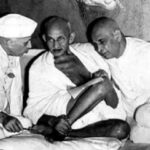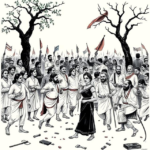Divulging Powers Dividing the Country
During a time of globalization, India remains as one of the world’s most socially different and monetarily arising powers. In any case, fundamental its advancement are firmly established powers making progress toward its fracture. This disturbing issue frames the center of “Bharat Vikhandan” (Breaking India), an interesting book composed by Rajiv Malhotra and Aravindan Neelakandan. The book dives into how India’s social texture is being undermined by outer powers, political plans, and philosophically determined accounts.
Figuring out the Specific situation
“Breaking India” centers around the secret and unmistakable endeavors by Western countries, strict establishments, and NGOs to undermine India by taking advantage of its socio-strict variety. While India has taken huge steps in its economy, science, and innovation, socio-policy driven issues like casteism, regionalism, and strict strains have remained wellsprings of concern. The book uncovered how these issues are intentionally amplified by outer players to debilitate India’s solidarity.

Frontier Foundations of Division
The creators follow the beginning of India’s socio-political partitions to the English frontier period. The English rulers standardized the rank framework and advanced troublesome personalities through approaches and stories pointed toward controlling the populace. The Aryan-Dravidian partition, for example, was a frontier build intended to encourage conflict among northern and southern India. Ministers and English authorities teamed up to depict Indian practices as in reverse, laying the preparation for later philosophical fighting.
Current Abuse of Personality Legislative issues
“Bharat Vikhandan” features how current personality based developments — like Dalit activism and Dravidian legislative issues — are much of the time affected by outer powers. Western NGOs, savvy people, and strict associations offer monetary and philosophical help to such developments, outlining India as a country tormented by rank persecution and imbalance. The book contends that while inside issues do exist, outer intercession frequently overstates these issues to serve international interests.
One of the book’s essential worries is the ascent of Dalit and Dravidian nonconformist accounts, which are depicted as being sustained by Western interests. These developments, while upholding for the privileges of minimized networks, are introduced as apparatuses utilized by unfamiliar powers to separate Indian culture along rank and local lines.
The Job of Strict Change
A huge part of the book is dedicated to examining the job of strict change in India’s fracture. Christian minister associations are blamed for involving philanthropic guide and schooling as a cover for converting exercises. The creators guarantee that such gatherings exploit the financial weaknesses of ancestral and lower-station networks to grow their impact, frequently by depicting Hinduism as severe.
The St. Thomas legend, the supposed appearance of St. Thomas in India, is additionally analyzed exhaustively. As per the creators, this story is being utilized to Christianize Tamil history and subvert its native strict practices. The book cautions of a methodical work to rework Indian history and culture from a Western-Christian point of view.
Western Scholarly Stories and Scholarly Fighting
Rajiv Malhotra and Aravindan Neelakandan contend that Western scholarly foundations assume a vital part in molding worldwide impression of India. Through examination, distributions, and courses, these establishments frequently present India as a general public overflowing with station persecution, strict narrow mindedness, and orientation disparity. The creators allude to this interaction as scholarly fighting, where accounts are painstakingly developed to sabotage India’s social legacy.
A few noticeable colleges and research organizations in the US and Europe are distinguished as central participants in this philosophical fight. By subsidizing researchers and examination that lines up with their account, these establishments impact both homegrown and global talks on India. The book underscores the requirement for India to foster its own scholarly foundation to counter such stories.
NGO and Media Contribution
One more significant topic in “Breaking India” is the job of non-legislative associations (NGOs) and the media. The creators claim that numerous NGOs working in India are financed by unfamiliar states and strict gatherings with stowed away plans. These associations, while apparently working for civil rights, are blamed for advancing dissident philosophies and instigating question.
The media, both homegrown and global, is depicted as a willing member in this plan. Sentimentalist covering standing viciousness, strict prejudice, and common liberties infringement is viewed as a way to delegitimize the Indian state and debilitate public union. The creators require an additional dependable and adjusted media approach that doesn’t succumb to outside control.
India's Interior Difficulties
While the book basically centers around outer dangers, it additionally recognizes India’s inside issues. Financial abberations, absence of admittance to quality training, and local uneven characters are genuine issues that should be tended to. In any case, the creators contend that these difficulties ought to be handled inside, without outer impedance that could additionally separate the country.
The ascent of digital fighting and computerized control is likewise featured as a trendy danger. With expanding web infiltration, India is defenseless against falsehood crusades and digital reconnaissance by threatening unfamiliar powers. The book focuses on the requirement for powerful network safety measures to defend the country’s advanced framework.
Source of inspiration: Protecting India's Respectability
“Bharat Vikhandan” finishes up with a source of inspiration for all Indians to stay watchful against troublesome powers. The creators encourage policymakers, learned people, and residents to perceive the unpretentious and obvious endeavors to piece the country. Fortifying public personality, advancing comprehensive development, and cultivating solidarity in variety are viewed as key stages towards defending India’s uprightness.
Moreover, the creators underline the significance of creating India-driven accounts in scholarly world, media, and public talk. They call for more prominent interest in training, social protection, and scholarly money to counter outside promulgation and construct a more grounded, more firm India.
Conclusion
“Bharat Vikhandan” is a wake-up call for anyone concerned about India’s future. It presents a compelling case for understanding how external and internal forces work together to create fault lines in Indian society. As India continues its journey towards becoming a global superpower, recognizing and addressing these challenges is more critical than ever. By fostering unity and building a strong national identity, India can counter the divisive agendas at play and emerge stronger on the world stage.
If you are interested in geopolitics, socio-cultural dynamics, or India’s internal and external challenges, “Bharat Vikhandan” is a must-read.
Related posts:
 Nehru to Modi: How Indian Prime Ministers Have Shaped the Nation
Nehru to Modi: How Indian Prime Ministers Have Shaped the Nation
 Unveiling the Treasure Trove: The Indian Constitution as Bhanumati Ka Pitara
Unveiling the Treasure Trove: The Indian Constitution as Bhanumati Ka Pitara
 Breaking the Cycle: Combating Terrorism at Its Ideological Roots
Breaking the Cycle: Combating Terrorism at Its Ideological Roots
 Unveiling the Mystery: The Dark Side of the Moon
Unveiling the Mystery: The Dark Side of the Moon
 Sardar Patel – The Unifier of India in the Shadow of Partition
Sardar Patel – The Unifier of India in the Shadow of Partition
 The Necessity of Annihilation of Caste in India: A Path to True Equality
The Necessity of Annihilation of Caste in India: A Path to True Equality
